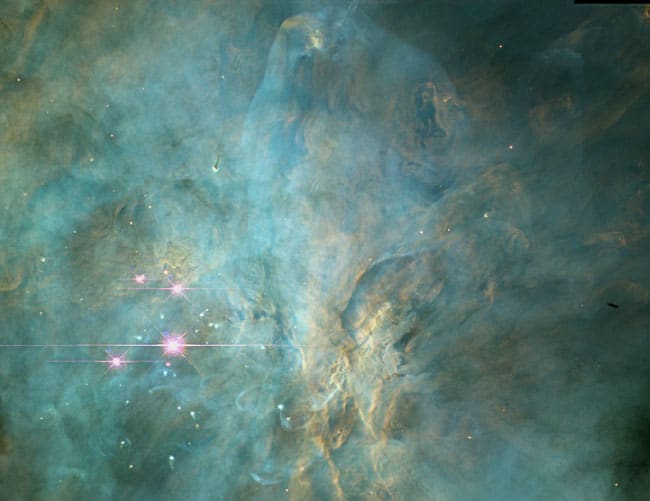The Cosmos with Trapezium
Near Orion’s belt is a fuzzy area known as the Great Nebula of Orion or M42. In this nebula is a bright star cluster known as the Trapezium, shown above. New stellar systems are forming there in gigantic globs of gas and dust known as Proplyds. Looking closely at the above picture also reveals that gas and dust surrounding some of the dimmer stars appears to form structures that point away from the brighter stars. The above false color image was made by combining several exposures from the orbiting Hubble Space Telescope.
The Trapezium or Orion Trapezium Cluster, also known by its Bayer designation of Theta1 Orionis, is a tight open cluster of stars in the heart of the Orion Nebula, in the constellation of Orion. It was discovered by Galileo Galilei. On February 4, 1617 he sketched three of the stars (A, C, D), but missed the surrounding nebulosity The fourth component (B) was identified by several observers in 1673, and several more components were discovered later, for a total of eight by 1888. Subsequently, several of the stars were determined to be binaries. Telescopes of amateur astronomers from about 5 inch aperture can resolve six stars under good seeing conditions.
The Trapezium is a relatively young cluster that has formed directly out of the parent nebula. The five brightest stars are on the order of 15-30 solar masses in size. They are within a diameter of 1.5 light-years of each other and are responsible for much of the illumination of the surrounding nebula. The Trapezium may be a sub-component of the larger Orion Nebula Cluster, a grouping of about 2,000 stars within a diameter of 20 light-years.
